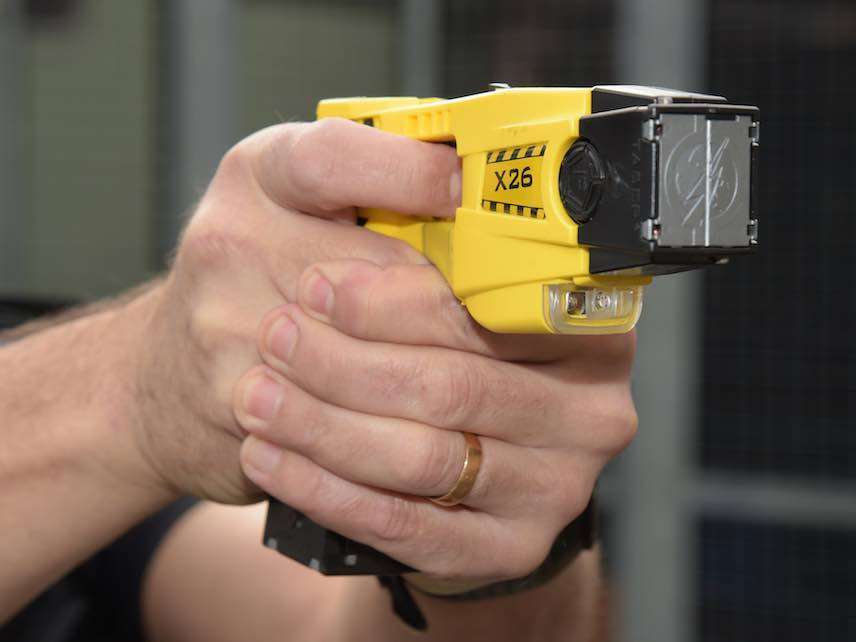A School Resource Officer Used a Taser on a Teen, Then Charged Him with Resisting Arrest
"He remembers falling to the ground, his muscles betraying his mind's desire to stand. Then he remembers nothing."

More cops in schools means more chances for young people to have ugly encounters with police officers. Consider what happened to Jalijah Jones, who was a freshman at Kalamazoo Central High School in Michigan when a school resource officer used a taser on him.
"He remembers a feeling of intense cold as if his high school hallway had just turned into a walk-in freezer," writes The Huffington Post's Rebecca Klein in an article on the incident. "He remembers falling to the ground, his muscles betraying his mind's desire to stand. Then he remembers nothing."
According to Klein, Jones wasn't a troubled kid. He'd never been in a fight until December 2017, when a classmate to whom he owed a small amount of money came to collect it:
Angry words were thrown back and forth, then a push and a shove and some swinging. But no one had been hurt until a school police officer Tasered the teen.
Jones, who says he blacked out after falling to the ground from the shock of the stun, remembers being cuffed a few seconds later, and the school cops dragging him through the hallways and out of school. His body shook furiously as he was loaded into a police car, before being escorted to the hospital in an ambulance. He was charged with resisting arrest?a charge that he is still fighting many months after the December 2017 incident.
Teens who get into fights need to be taught that it's inappropriate for adults to solve their differences in this manner, and schools should discipline them appropriately, with the aim of fostering more civilized behavior. But it's dangerous to use a taser to break up a shoving match, and it's absurd—and possibly life-derailing—to charge a kid with "resisting arrest" for failing to obey a school resource officer swiftly enough.
This terrible outcome would have been avoided if Kalamazoo hadn't delegated disciplinary responsibilities to a police officer. There is a cost to letting cops handle minor infractions of school rules: more handcuffs, more tasers, and more arrests. Is this really better for students? Is it any safer?
Klein writes:
The police officer who stunned Jones is one of over 80,000 currently stationed in public schools around the country, according to the most recent data available from the U.S. Department of Education, covering the 2015-16 school year. In 1997, only 10 percent of public schools had police officers, but in 2016, 42 percent did.
The number has risen sharply in the past few years and will continue to grow. Amid the recent spate of deadly school shootings, there has been an increase in federal money funding school police officer positions. This is true at the state level as well: New legislation in places like Florida has devoted millions of dollars to install more armed police officers in hallways. More armed guards lined the hallways as kids returned to school this year.
There is understandable logic to having more police in schools. After all, they have been credited with stopping several school shootings in recent months. But civil rights activists say there's another negative side to this police presence, once which puts students like Jones—young and impulsive, acting on frivolous teenage passions—in danger of police brutality and criminal charges.
The Huffington Post has attempted to track the number of tasing and pepper spray incidents in schools. The numbers—120 taser incidents since 2011, and 32 pepper spray incidents since 2016—may seem small, but they only include incidents that made the news. These kinds of things are probably much more common than they seem—and likely to become even more common, as safety paranoia continues to push the authorities to make school more prison-like.
Bonus link: Former Reason Foundation analyst Tyler Koteskey and I wrote about the rise of SROs for the March 2017 issue of Reason. Read that story here.


Show Comments (31)